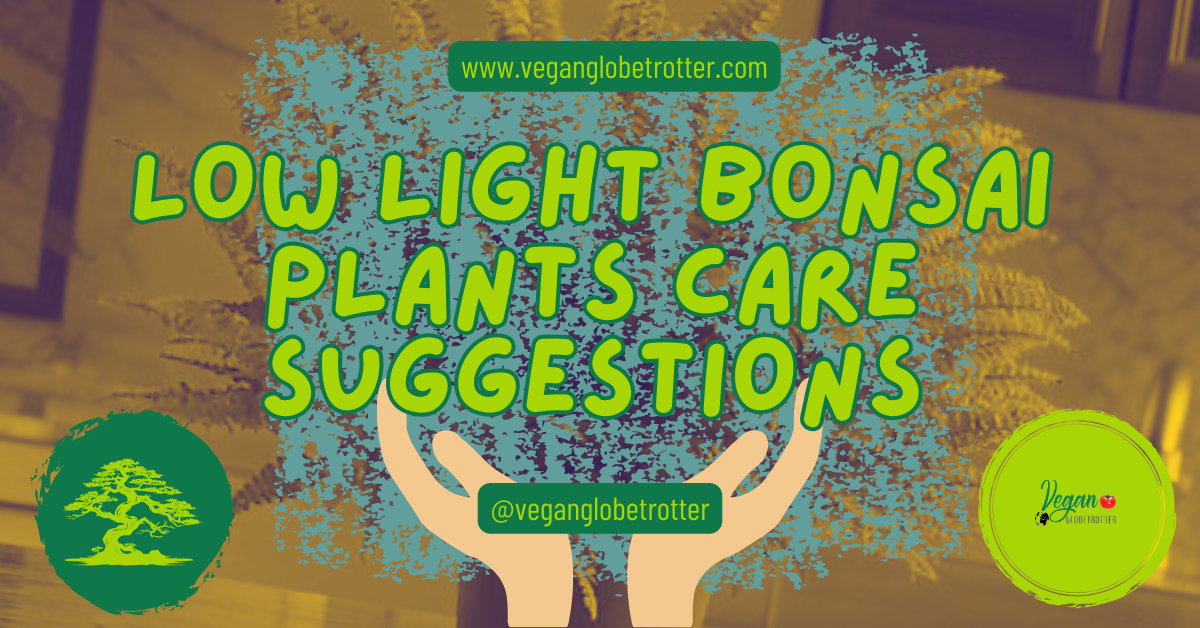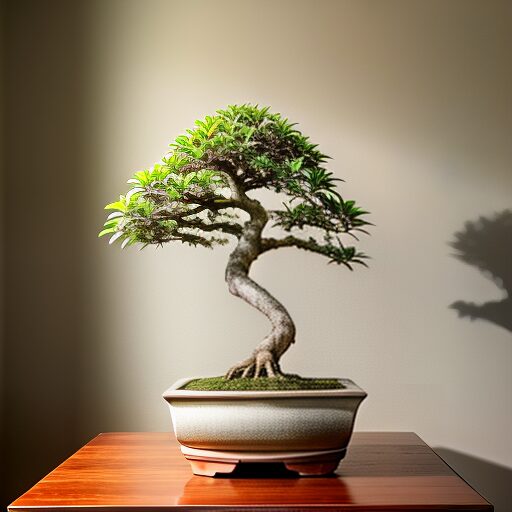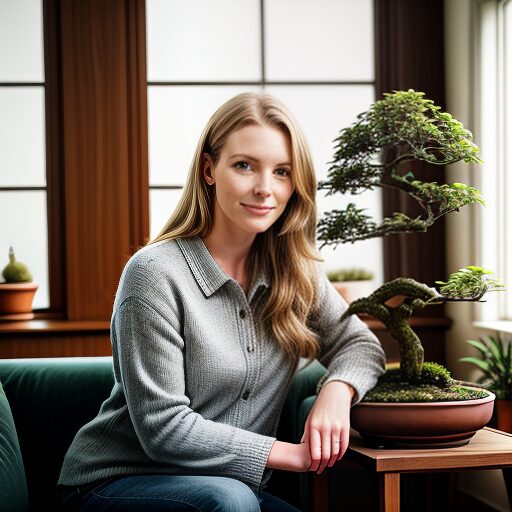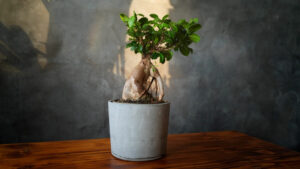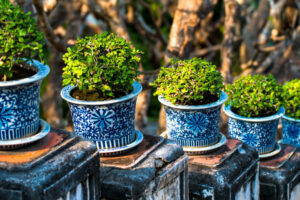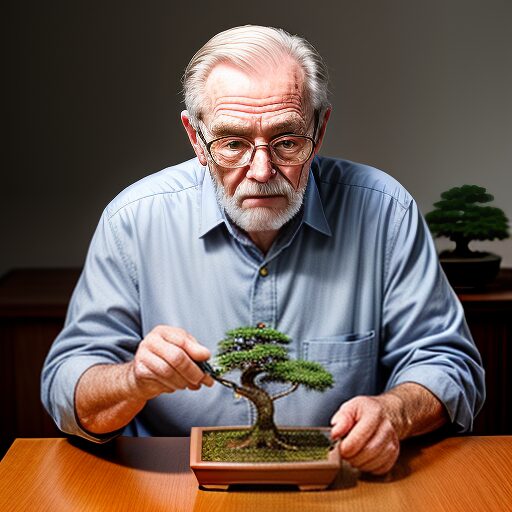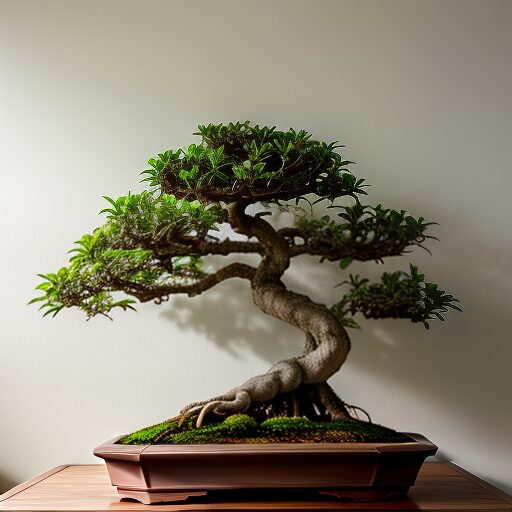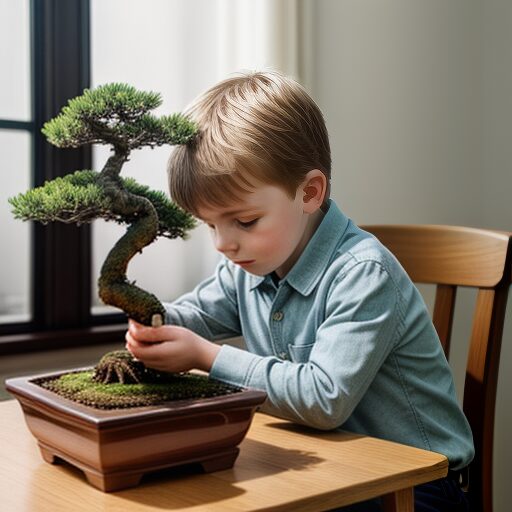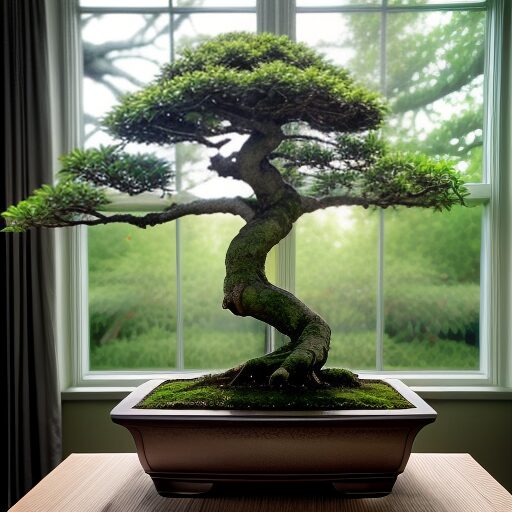HousePlantJoy is supported by our audience. When you purchase through one of our links, we may earn a small affiliate commission. As an Amazon Associate I earn from qualifying purchases. Your cost is not affected.
==================
Embarking on the journey of cultivating indoor trees, particularly delicate specimens like low light bonsai trees, opens the door to a realm where spaces transform into havens of relaxation and vibrancy. The allure of these miniature trees goes beyond mere aesthetics, as they not only purify the air but also thrive in spaces where sunlight is a scarce commodity.
In the hustle and bustle of modern living, these low-maintenance indoor bonsai trees become the perfect companions for the busy, space-saving, and plant-loving homeowner. However, nurturing them requires a delicate balance of understanding their unique needs for indirect light, hydration, and nutrients.
In this exploration, we delve into the intricacies of caring for these botanical gems in limited spaces, uncovering the art of cultivating life within the confined yet nurturing embrace of our homes. So, if the idea of having your own oasis of greenery indoors beckons, join us as we unravel the secrets to nurturing indoor trees that thrive even in light deprivation. Discover how to provide just the right amount of enough light and create an environment where these low light miniature trees can flourish, despite the challenges of full sun scarcity.
How Low Light Bonsai Plants Work
The Best Indoor Bonsai For Low Light Spots
Ficus Bonsai Tree
Fukien Tree Tea
Video credit: @Bonsaifly
What Low Light Bonsai Plants Usually Need
Lighting
Watering and Using Fertilizer
Low light bonsai plants may not need constant watering but they do need some hydration. It’s the same with using fertilizer on the soil. Like humans, the vegetation gets thirsty too. Hence, they need a bit of misting from time to time. Plus, water provides the root and other parts of bonsai houseplants with oxygen. In the same way, fertilizers also aid in the better growth of the best indoor bonsai for low light spaces. Such delivers macronutrients such as nitrogen, phosphorus, and potassium. But fertilizers are not the same as plant food. Rather, make it comfortable for miniature trees to create their food. So water and
Temperature and Humidity
Ivy Tree Growing Conditions Needed
Use these guidelines for growing your ivy tree:
- Light: It thrives in anything from bright to light shade in the summer. Dimmer light suffices during winter. Dappled sunlight keeps it happy. However, it doesn’t like direct sunlight. Consider this plant for more relaxed rooms. In winter, keep at about 70°F for the best plant health.
- Water: Keep the soil moist in the summer growing season, especially for your water tree ivy. But your Ivy Tree prefers less water in the winter months when primarily dormant. Remember to use cool or room temperature water, never warm or hot. Fatshedera enjoys a mist occasionally to raise humidity.
- Fertilizer: Feed weekly with a weak liquid fertilizer during the growing season, particularly ensuring it includes micronutrients to encourage blooming. Fertilize tree ivy, like Fatshedera, responds well to ample fertilization as it is a heavy feeder.
- Soil: Use light, fast-draining potting soil, especially if tree ivy prefers it. Some like to use fortified grounds.
Propagation
As a sterile hybrid, Ivy trees, particularly those of the Pia tree variety, propagate stem-tip cuttings, not seeds. While not essential, using a rooting hormone increases the odds of success in Pia tree ivy propagation. Also, please keep the humidity level high.
Repotting
Repot each year at the beginning of the new growing season, especially for a tree ivy houseplant. When repotting, use fresh potting soil and choose a pot at least one size larger than it currently grows.
The Ivy Tree needs cooler temperatures anytime. However, excessive heat causes even more stress during repotting and shortly after. Avoid exposure to warmer temperatures, especially during repotting and shortly after.
Fatshedera often appears relatively sparse. Plant two or three in the same pot to create a bushier look. Alternatively, try pinching off the growing tips of emerging stems. This encourages some side growth.
Varieties
As a hybrid cross of English ivy and Fatsia japonica, Fatshedera exists in only one variety. Because it is sterile, as many hybrids are, Fatshedera does not cross with other species, either. However, several variations exist. They show increased leaf variegation or larger cream-color splotches on the leaves.
Expert Tips for Indoor Trees in Low Light:
Strategic Pruning: Seasoned enthusiasts of indoor trees recommend strategic pruning to maintain the desired shape. Focus on removing excess growth, especially in low light conditions, to ensure the plant’s energy is directed where it’s needed most.
Customized Lighting: Experts emphasize the importance of customized lighting solutions for indoor trees. LED lights with adjustable spectrums prove valuable, allowing enthusiasts to tailor the light deprivation conditions for optimal growth without the risk of burning foliage.
Patience in Watering: Bonsai care veterans stress the need for patience in watering routines for indoor trees. Rather than adhering to a fixed schedule, monitor the soil moisture and adjust watering frequency accordingly, preventing both under and over-watering.
Seasonal Adjustments: Adapting care routines with the seasons is a key tip for indoor trees. Be attuned to temperature and humidity changes, adjusting watering, fertilizing, and placement to accommodate the evolving needs of your low light bonsai.
Observation is Key: Finally, seasoned growers emphasize the importance of keen observation for indoor trees. Regularly inspect your bonsai for signs of stress, pests, or diseases. Early detection allows for prompt intervention, ensuring the health and vitality of your cherished indoor trees.
Should You Add Low Light Bonsai Plants To Your Home?
FAQs
What kind of environment is best suited for low light bonsai plants?
Low light bonsai plants thrive in places where it’s a bit cooler. They can also do well when in areas away from direct sunlight. Putting them in spots where diffused or indirect light works best too. Hence, getting a bonsai plant adjusted and thriving may take a while. But the effort to make it adapt is worth it. Don’t miss out on these unique and fascinating bonsai trees! Check out our list of the Top 7 Crazy and Unusual Bonsai Trees to add a touch of whimsy to your collection. Click now to see them all!
How often should I water my low light bonsai plant?
Low light bonsai plants need frequent but shallow watering. They still get thirsty as plants but should never drown in water. Check the soil every few days to ensure it’s moist but not soggy. You can use your fingers for your assessment. Also, avoid over-watering, leading to root rot and other issues.
How do I prune my low light bonsai plant?
It would help to prune your low light bonsai with care and patience. Plants do well when their branches are short. But, as mentioned, they still need to adapt. Please take note that the pruning process gets them stressed. So we have to be patient with them in this matter. But you ought to use clean, sharp tools that reduce the risk of damaging branches or leaves. Be gentle when you’re pruning. Start by removing dead and diseased wood for practicality. It would help if you did that before trimming any overly vigorous branches. These techniques can reduce plant stress and get essential tasks prioritized.
?? Discover the World of Bonsai at Houseplant Joy! ??
Immerse yourself in the captivating art of bonsai plant care and join our passionate community at Houseplant Joy. Follow us on social media platforms for a truly enriching experience filled with engaging content, product reviews, and connections with fellow bonsai enthusiasts.
Facebook: Engage with us at facebook.com/houseplantjoyblog for insightful articles, discussions, and updates.
Instagram: Feast your eyes on stunning visuals and get inspired by following us at instagram.com/houseplantjoy20.
Pinterest: Unlock a world of inspiration and creativity by exploring our boards at pinterest.com/houseplantjoy.
Twitter: Stay in the loop with real-time updates, events, and bonsai-related news by following us at twitter.com/houseplantjoy.
Let Houseplant Joy be your gateway to a fulfilling bonsai journey. Unleash your green thumb, gain expert tips, and connect with a community that shares your love for the beauty and tranquility of bonsai. Visit our social media accounts now and embark on a bonsai adventure like no other. Happy bonsai gardening! ?✨

